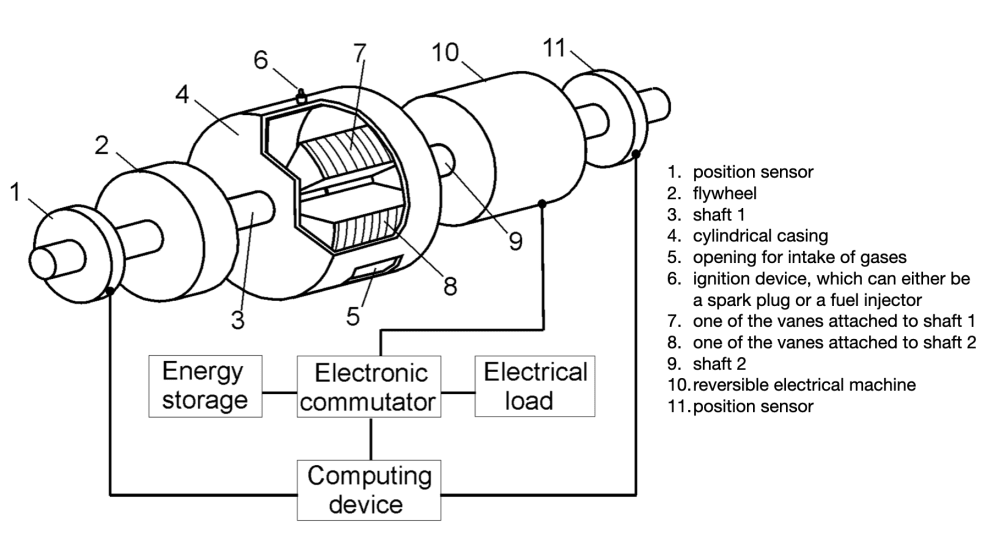Internal combustion engines are ubiquitous machines powering the global economy. They are employed in commercial vehicles, trucks (off/on-road), marine propulsion, aircraft, and power generation. Engine manufacturers worldwide are under constant pressure from governments to improve fuel efficiency and decrease greenhouse gas emissions. Currently, the average efficiency of internal combustion engines is 40%. We are facing a problem in that the highest attainable efficiency for the existing crank-slider engine technology is 60% (assuming that cost is not a constraint).
A solution to this problem is to develop an internal combustion engine that avoids the slider-crank mechanism (accounting for 10% efficiency loss in existing engines, as well as removing the need for a valve-train) and in which heat energy generated by combustion is directly converted to rotational motion.
Since the mid 19th century when the first reciprocating piston internal combustion engines began to be seriously developed and commercialised, engineers have been working hard to overcome the drawbacks of the slider-crank mechanism. Many alternative engine designs have been proposed. None have succeeded.
The problem facing most rotary vane (or swing piston) engine designs is that of facilitating requisite coordinated rotational motion of the pistons. The main cause of failure in all proposed designs is that they employ mechanical linkages to achieve coordinated rotation. Components of these mechanical linkages experience alternate shock loadings, which lead to their rapid destruction and consequent inoperability of the proposed engine.
Our patented solution avoids mechanical linkages completely, replacing them with electrical machines to achieve requisite coordination of rotating pistons. We propose a redesign that removes the slider crank mechanism, valves and associated camshaft - the main sources of friction in existing reciprocating piston internal combustion engines. The proposed design is based on a swing piston engine which has clear advantages over the current reciprocating piston in that it has no requirement for valves or camshaft, and has direct rotational motion creation.
Our design has clear advantages over current internal combustion engines: reduction in frictional and pumping losses, fewer parts (i.e. less raw materials), higher power to weight ratio, faster assembly, less maintenance, balanced engine (less noise), improved fuel efficiency, greater reliability, lower manufacturing cost (at volume), future IP concentrated in software (hard to copy).
Our engine, apart from paving the way for rotary vane engines to enter the market as superior alternatives to existing internal combustion engines, pushes all the complexity and control of engine combustion and operation into software - in Silicon Valley speak “software is eating the world of internal combustion engines”.
We anticipate that development, commercialisation and market adoption of our engine first into portable/stand-by generators serving construction and mining industries and subsequently by the marine propulsion industry.
Video
Like this entry?
-
About the Entrant
- Name:Natalia Galin
- Type of entry:individual
- Software used for this entry:Matlab/Python/OnShape
- Patent status:patented

